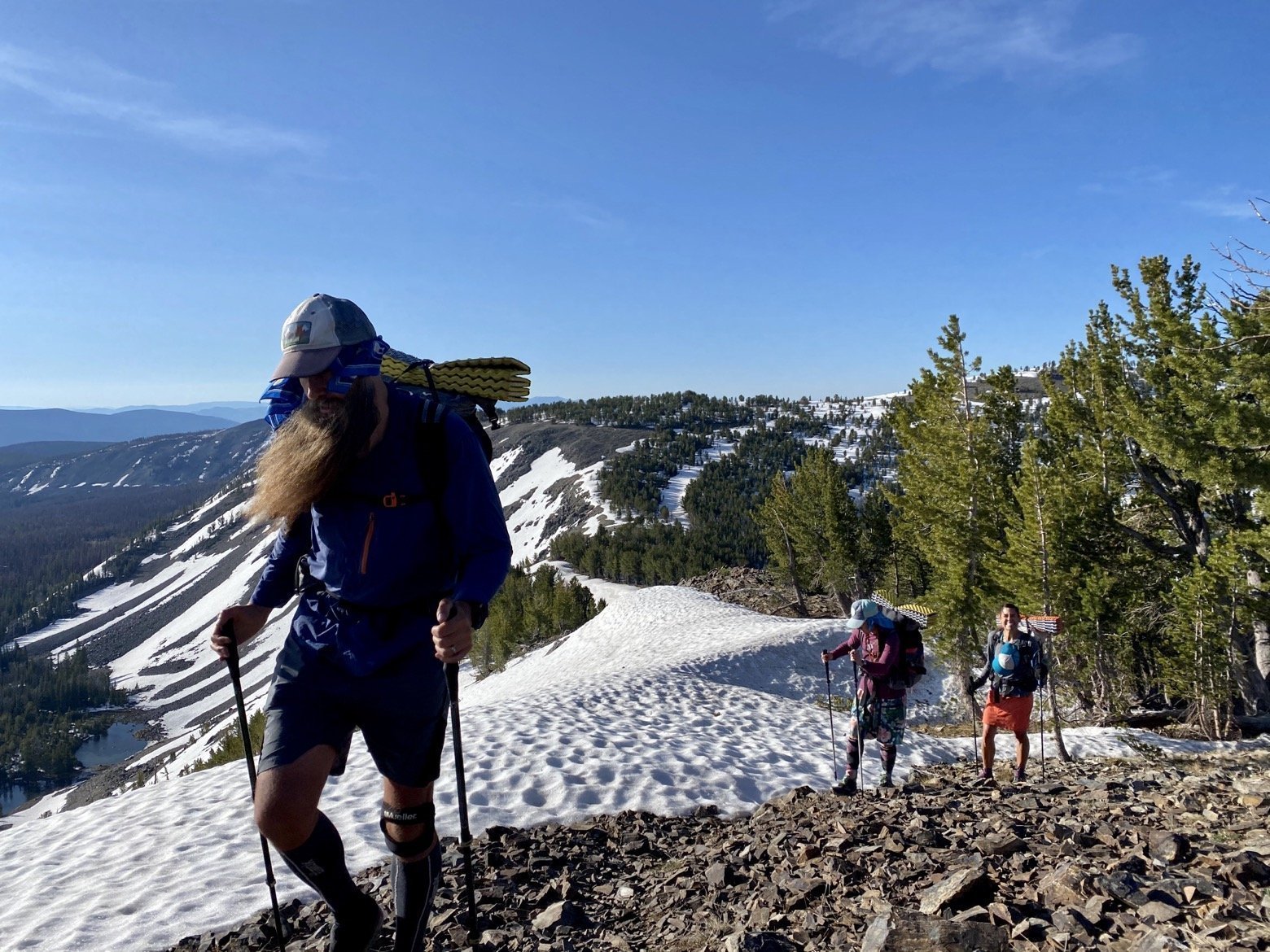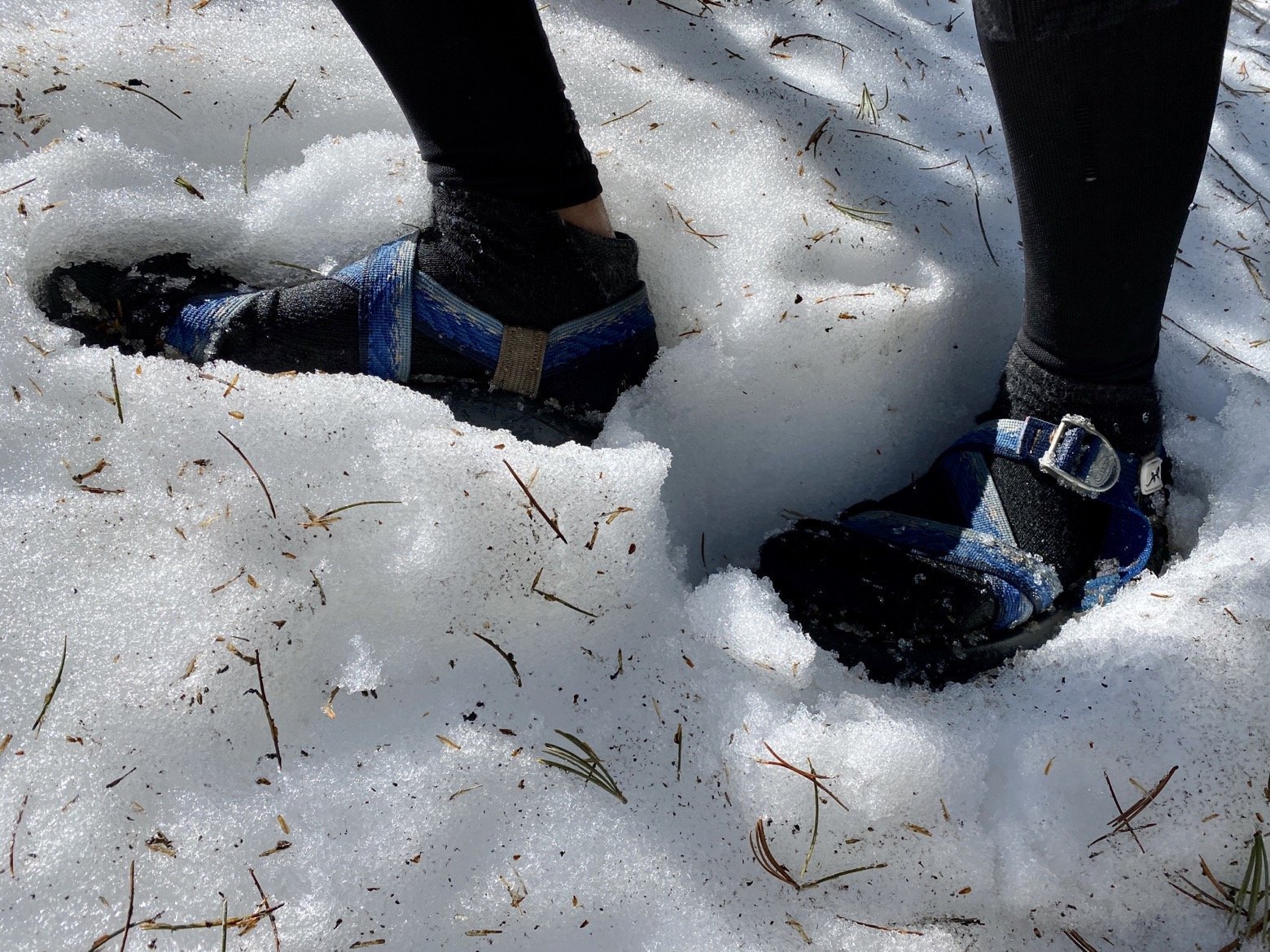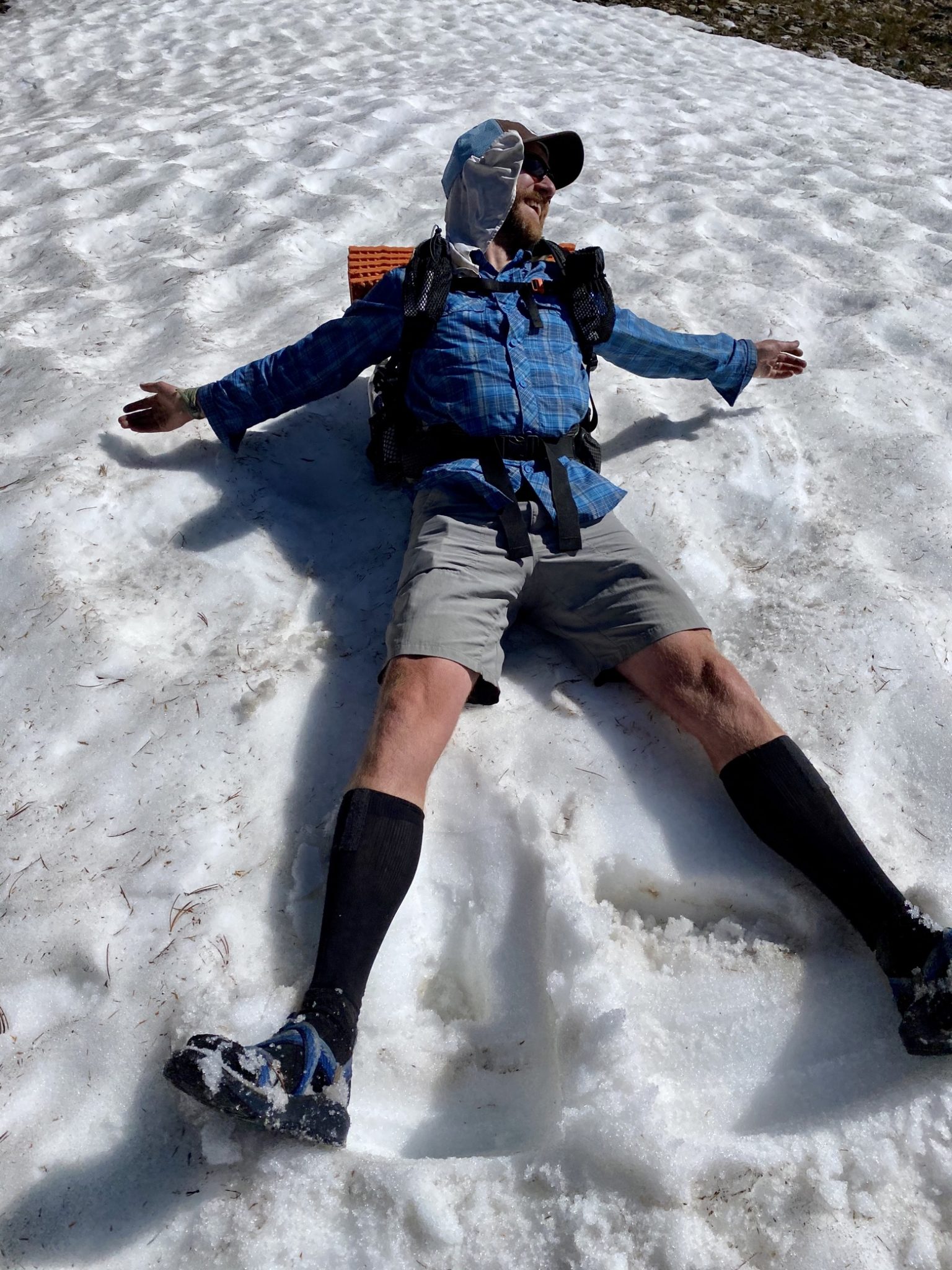Date: 6/26/20
Miles: 18.5
Total Miles: 250.0
Thirty miles. That seemed reasonable given the perfect weather we were expecting and the gentle topography after the first few miles of climbing. It didn't go as planned.
It was obvious that something had changed, even as we crested the first high point of the day. What at first was amusement when we saw the banks of snow piled 8 feet high slowly evolved into dread over the following hours as it became painfully clear: this wasn't a temporary obstacle. Looking out from that first high point, we could see that this section of the divide held quite the unpleasant secret, namely that it was holding onto a much deeper snowpack and one that extended nearly a thousand feet lower in elevation than anywhere we'd encountered so far.
Under the right conditions, snow can be a blessing. It can smooth otherwise troublesome contours, and on the right slope aspect and with the right amount of sunlight, it can be firm enough to move quickly over without being too hard to gain traction. On the other hand, if the sun has had its way with the snow for enough time, it turns those drifts into a soft, wet mess with the consistency of rock salt, just waiting to let each step plunge in until a knee or even a waist arrests the sinking. Known as “post-holing”, it can be exhausting, not to mention super effective at slowing progress to an absolute crawl.

With only 8 miles behind us after 6 hours of hiking, we'd had plenty of time to contemplate the impact of post-holing on our pace. Hour after hour, we'd take turns breaking trail, often post-holing repeatedly, before pausing again and again to route-find. When the trail became so buried in soft snow for longer stretches, we'd pick our way around the snow as much as possible, hopping from the circle of bare ground beneath one clump of trees to another in an effort to save some of the energy that post-holing was quickly consuming.

The upside to the crystal clear, warm weather was that most of the navigation could be done using only the topography. We'd note the course of the trail on the map, match it to the obvious features of the terrain that we could see, and follow the proper contours as best we could. Needless to say, all of that combines for much slower travel than simply walking a nicely compacted dirt path.

An oft-overlooked challenge of hiking over snow is how hot it can be. Acting like a giant sun reflector from below, you'd be forgiven for feeling like a turkey in the oven, slowly being baked equally from all sides. Add in the serious glare, and it can lead to eye fatigue from all of the squinting should you be without polarized sunglasses. In the worst case of being without sunglasses at all, the intensity of the sunlight reflecting off the snow can lead to a condition called snow blindness. Put simply, a sunburned cornea you do not want. Unless, of course, the inability to see and the sensation of having an eye full of sand sounds like your idea of a good time.

Sun cups are another fun pitfall. As the snow melts under the heat of the sun, it does so unevenly, causing the formation of a field of pockmarks. Since the depth and firmness of each cup is non-uniform, it can make for an ankle and knee-twisting good time if you're not careful. Even without them, taking the first step from the safety of nearby rocks onto a snow field can hold a surprise. Since rocks and trees channel the heat of the sun, they melt the snow from underneath, opening pockets of air that you can't see until, well, you post-hole into them, hopefully sparing yourself a knee or ankle injury in the process.
Here's the kicker. Even in spite of all those snow travel challenges, I actually quite like it, at least right up until the point when it feels as though there is no end in sight. That's the point it all starts to feel like it's own Sisyphean exercise, cursed to post-hole for all eternity.

Finally down off the high country and onto deliciously bare, stable ground after 10 hours of fun in the snow we hiked a few more hours to make up for lost time. The price of all this newfound, civilized trail this afternoon? Flocks of friendly mosquitoes to keep us company for the night.
